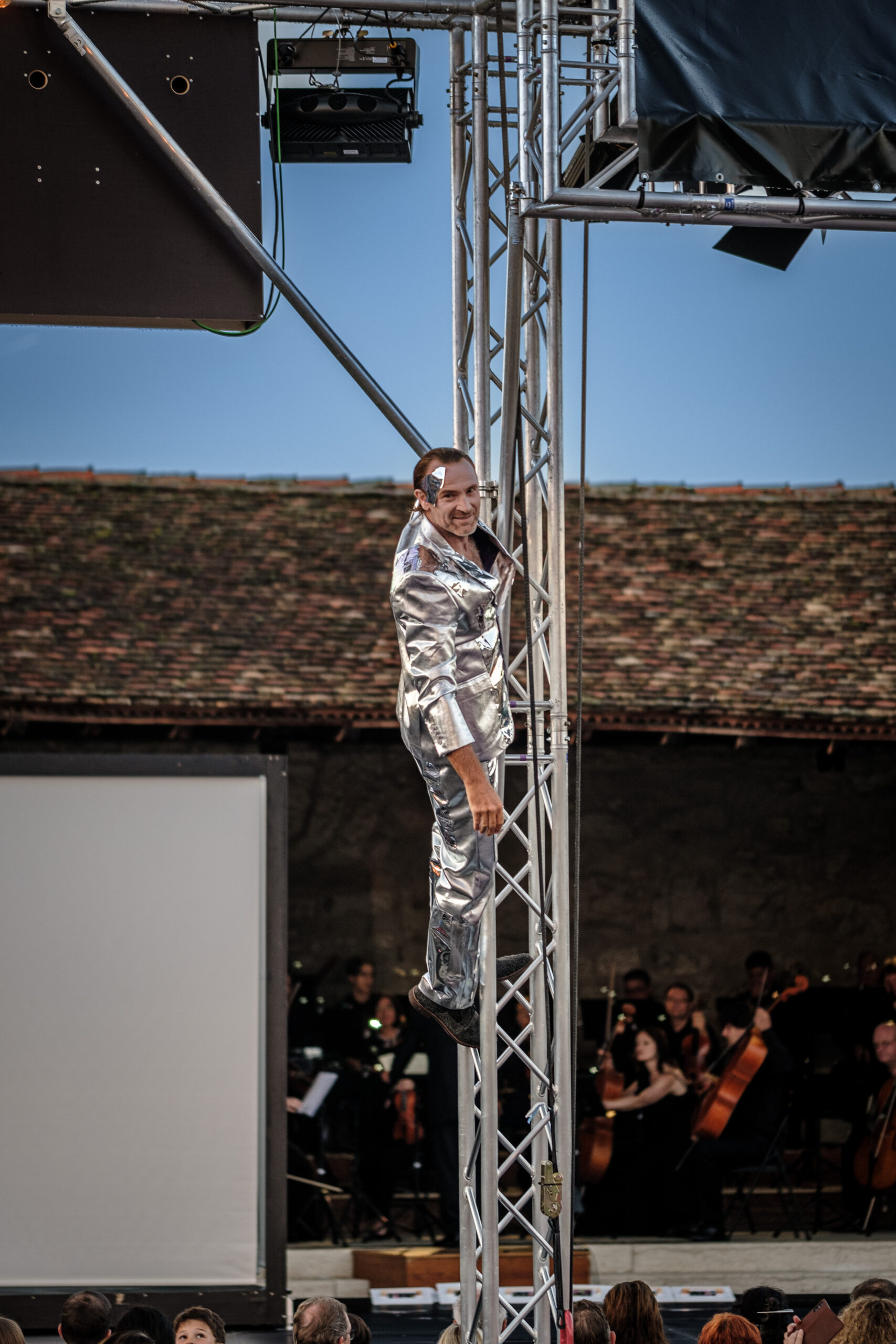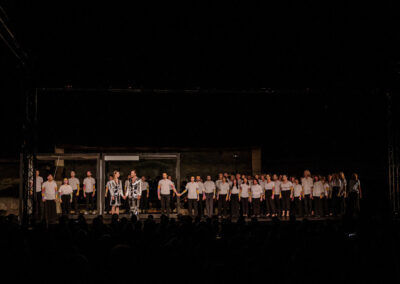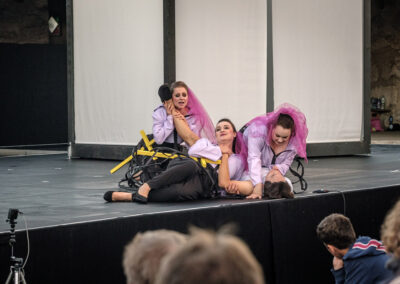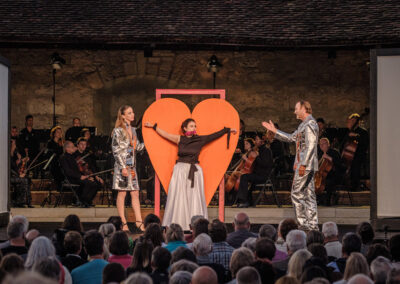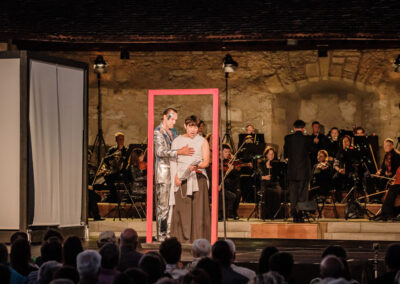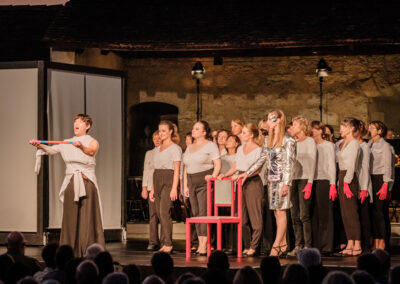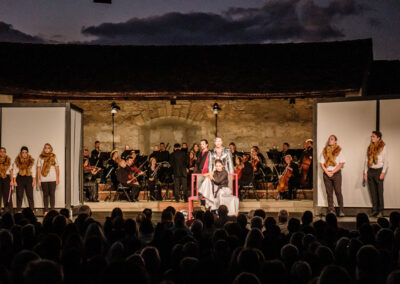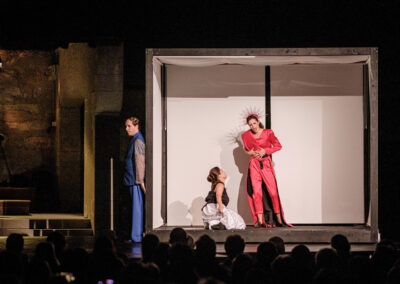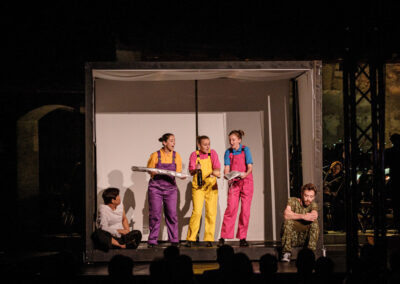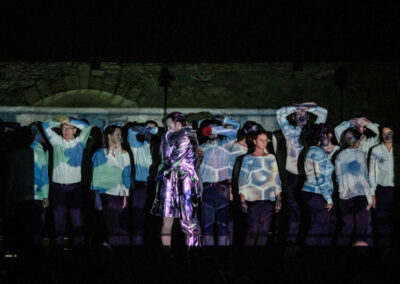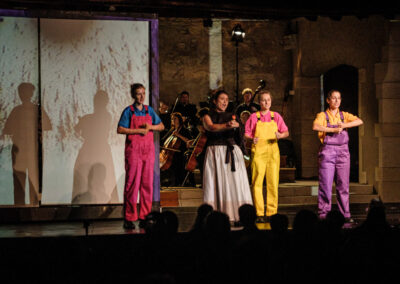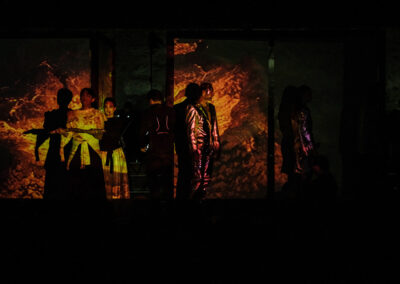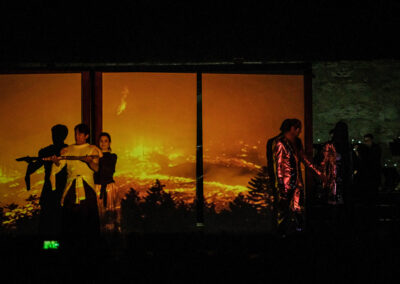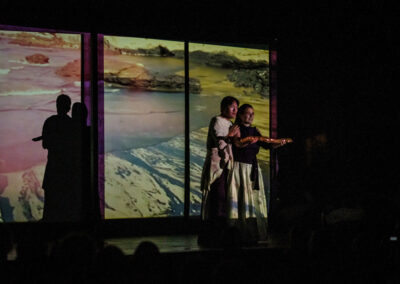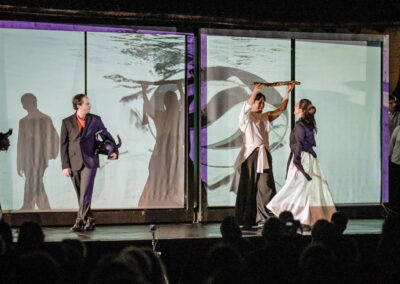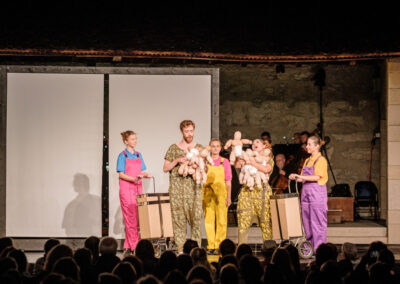Die Zauberflöte
The Magic Flute
Cosí Fan Tutte was made in 2018; Hänsel und Gretel, in 2019 and, as a result, I received an invitation to stage Mozart’s Magic Flute for a small open-air festival in the Munot fortress in Schaffhausen in Switzerland the following year. Unfortunately, the Covid pandemic eliminated the plans and the production was transferred to the summer of 2021, when it was again canceled, still as a result of the insecurities in international traffic generated by the pandemic – the orchestra should come from Lemberg/Lviv in western Ukraine, which was why it was almost canceled a third time in 2022, this time however, due to the war. Since Lviv is far from the front, the arrival of the orchestra was confirmed and the production was then carried out in August of that year.
The basic conditions differed little from those I found in Mexico: almost no funding, very short rehearsal time, almost no rehearsal time on stage, performers with little experience and the practical absence of an organization/production structure. In the same way as for « Cosí… » and « Hänsel… » there was a concern on the part of the artistic coordination to do something traditional and, in this case, follow the idea of a fairy tale.
Fairy tales have/had the function of introducing children little by little to adulthood. The magic flute, especially in its second act, describes an initiation ritual into Freemasonry. The entire work is permeated with Masonic symbols and rites (Mozart and Schikaneder – composer and librettist – were freemasons). In my interpretation, I decided to distance myself from the Masonic aspect, but maintain the ritual/initiatory aspect of the work and, instead of being initiated into Freemasonry, the central character is initiated to become himself, to become a more conscious human being.
As already mentioned, the show was designed to be held outdoors, in the upper square of the Munot fortress in Schaffhausen, a place with impressive views of the entire surroundings and, in itself, of great fascination. Once again there was the basic problem of capturing the public’s attention/concentration. Furthermore, due to the time stipulated for the start of the show, the entire first act would take place in daylight and the second would take place at night.
To face these difficulties, I decided, in terms of scenography and costumes, to create an artificiality that could assert itself in this environment. The set consisted of two white cubes with black edges on a raised platform that seemed to have the quality of abstract sculptures in the middle of the fortress. The costumes derived from the deconstruction/reassembly of normal clothing; thus creating unusual shapes, mostly monochromatic, with intense colors – or also in black and white. These forms complemented each other depending on the relationship between the characters (Tamino – Pamina; Queen of the Night – Sarastro; etc). For the second act, I decided to make extensive use of video projections, in order to strengthen the projective aspect of the fears we go through, when we’re at proof.
Many of the singers did not have a good pronunciation of spoken German for the endless Magic Flute recitatives. Therefore, the festival’s artistic direction hired actor Bernhard Bettermann to play the role of a narrator, whose storytelling would replace the dialogues between the singers. However, after constituting the dramaturgy of the performance, I decided to transform him into the engine and not just the narrator of the changes that occur during the play. I called him « Human », dressed him in a costume that functioned as a mirror and assigned him a companion, the « Young Old Lady ».
During the Ouverture, all the performers entered through the audience, while « Human » declaimed Shakespeare’s first sonnet that condenses the situation of uncertainty of human beings in relation to themselves and the world. Such uncertainty generates conflicts and fear. Amidst this, « Human » and his companion choose Tamino as the one who will go through the ardous process of trying to become oneself. At the end of the Ouverture, « Human » asks the audience « What am I afraid of? », « What am I afraid of in myself? » and so the first act began – with Tamino feeling threatened by a large and sensual female mouth (formed by all the other performers). In a similar way, « Human » introduced later on the other characters and situations through questions which express their inner conflict or the conflict which are at the core of the dramatic situations.
The entire first act was performed in an almost minimalist way, in front of or between the two cubes with the singers creating the different situations with the help of few stage accessories.
At the beginning of the second act, all performers return on stage, while « Human » recites « Stufen » by Hermann Hesse – an invitation to the initiation journey -, at the end of which, Pamina is taken to one of the cubes, while Tamino and Papageno are taken to the other: at that moment, the ritual itself begins. Several scenes take place inside the rotating cubes that function additionaly as a projection screen for the images of the fears we carry within us, culminating in the trials of fire and water – respectively, images of war, forest fires and oil spills,of contamination of rivers and seas full of plastic – which are overcome when Tamino and Pamina become themselves, become more evolved human beings by recognizing that, in their ancestral fears (the snake), their strength (the magic flute) was already to be found Actually, in the end, the flute and the snake are the one and same object. The defeat of superstition and the supposed defeat of the Queen of the Night coincides with the end of the projected images, with the celluloid that burns… « Human » then declaims a text that celebrates the initiation that is living each day. Therefore, the final apotheosis, instead of representing Sarastro’s victory, presents all the characters dressed in the same way, equally human, stained with colors as in the Holi festival. The Queen of the Night, Monostatos and the three Ladies also appear again and participate in this final apotheosis that ends with all the characters, chorus and figuration included making a large circle around the audience.
Due to the lack of rehearsal time, the lack of a production structure and some bad luck regarding the weather, several things that had been planned could not be carried out. Despite this, the production was a success, with tickets for the last performance completely sold out.


